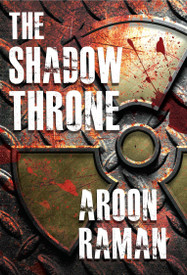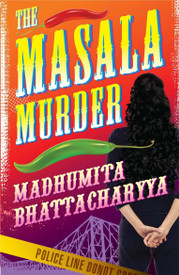During a recent visit to the beautiful town of Bishnupur in West bengal's Bankura District, I was fascinated by the sight of local weavers creating magic on their looms.
Intricate Baluchari saris are works of art woven in silk. The borders and pallu are embellished with exquisite motifs inspired by the epics, mythology and traditional texts, as also scenes from courtly life. Each panel of these delicately woven sarees tells a timeless story. A single sari can depict an entire episode from the Mahabharata or Ramayana, woven into its border and pallu. The magical weaves with their centuries-old tradition continue to enchant through generations. They take pride of place in the heirloom collection of Bengali women.
 Traditional Baluchari sarees are woven in the history-steeped town of Bishnupur, in West Bengal’s Bankura district. There are several clusters of weavers here who continue to create enchanting sarees. Haradhan Bishoi oversees one such setup, where eight or nine weavers work at any given time. The mulberry silk is sourced locally, he tells us. The entire process, from rearing silkworms, to spinning and dyeing the yarn, and then designing and weaving sarees, is done locally. The fine and soft local silk has a unique lustre. To make the yarn supple and shiny, it is boiled in a mixture of soda and soap and then dyed. Designing these sarees requires elaborate planning and execution. Each saree takes two expert weavers, working by turns, around a week to weave. The more complex ones can take much longer. The sarees are hand-woven on jacquard punch-card looms. Creating intricate designs for the border, butis and pallus of Baluchari sarees is an elaborate process. The design is drawn on a graph paper and then punched on cards. After punching, these cards are joined in sequence and fixed in the jacquard machine. These coded and punched chains of jacquard cards control the movement of the warp on the loom to create finely woven details in silk.
Traditional Baluchari sarees are woven in the history-steeped town of Bishnupur, in West Bengal’s Bankura district. There are several clusters of weavers here who continue to create enchanting sarees. Haradhan Bishoi oversees one such setup, where eight or nine weavers work at any given time. The mulberry silk is sourced locally, he tells us. The entire process, from rearing silkworms, to spinning and dyeing the yarn, and then designing and weaving sarees, is done locally. The fine and soft local silk has a unique lustre. To make the yarn supple and shiny, it is boiled in a mixture of soda and soap and then dyed. Designing these sarees requires elaborate planning and execution. Each saree takes two expert weavers, working by turns, around a week to weave. The more complex ones can take much longer. The sarees are hand-woven on jacquard punch-card looms. Creating intricate designs for the border, butis and pallus of Baluchari sarees is an elaborate process. The design is drawn on a graph paper and then punched on cards. After punching, these cards are joined in sequence and fixed in the jacquard machine. These coded and punched chains of jacquard cards control the movement of the warp on the loom to create finely woven details in silk.
My published article may be read in Sunday Herald
I've received several inquiries from readers for Bishnupur contacts and replied individually. For others who might be interested, here are the contacts of Haradhan Bishoi. They have an excellent collection of saris for all budgets, for sale wholesale and retail.
Anuvab, manufacturers of Baluchari and Swarnachari sarees.
Chinnamasta
Bishnupur,
Dist. Bankura,
West Bengal
phone; 03244-256308
hope this helps,
M S
Intricate Baluchari saris are works of art woven in silk. The borders and pallu are embellished with exquisite motifs inspired by the epics, mythology and traditional texts, as also scenes from courtly life. Each panel of these delicately woven sarees tells a timeless story. A single sari can depict an entire episode from the Mahabharata or Ramayana, woven into its border and pallu. The magical weaves with their centuries-old tradition continue to enchant through generations. They take pride of place in the heirloom collection of Bengali women.
 Traditional Baluchari sarees are woven in the history-steeped town of Bishnupur, in West Bengal’s Bankura district. There are several clusters of weavers here who continue to create enchanting sarees. Haradhan Bishoi oversees one such setup, where eight or nine weavers work at any given time. The mulberry silk is sourced locally, he tells us. The entire process, from rearing silkworms, to spinning and dyeing the yarn, and then designing and weaving sarees, is done locally. The fine and soft local silk has a unique lustre. To make the yarn supple and shiny, it is boiled in a mixture of soda and soap and then dyed. Designing these sarees requires elaborate planning and execution. Each saree takes two expert weavers, working by turns, around a week to weave. The more complex ones can take much longer. The sarees are hand-woven on jacquard punch-card looms. Creating intricate designs for the border, butis and pallus of Baluchari sarees is an elaborate process. The design is drawn on a graph paper and then punched on cards. After punching, these cards are joined in sequence and fixed in the jacquard machine. These coded and punched chains of jacquard cards control the movement of the warp on the loom to create finely woven details in silk.
Traditional Baluchari sarees are woven in the history-steeped town of Bishnupur, in West Bengal’s Bankura district. There are several clusters of weavers here who continue to create enchanting sarees. Haradhan Bishoi oversees one such setup, where eight or nine weavers work at any given time. The mulberry silk is sourced locally, he tells us. The entire process, from rearing silkworms, to spinning and dyeing the yarn, and then designing and weaving sarees, is done locally. The fine and soft local silk has a unique lustre. To make the yarn supple and shiny, it is boiled in a mixture of soda and soap and then dyed. Designing these sarees requires elaborate planning and execution. Each saree takes two expert weavers, working by turns, around a week to weave. The more complex ones can take much longer. The sarees are hand-woven on jacquard punch-card looms. Creating intricate designs for the border, butis and pallus of Baluchari sarees is an elaborate process. The design is drawn on a graph paper and then punched on cards. After punching, these cards are joined in sequence and fixed in the jacquard machine. These coded and punched chains of jacquard cards control the movement of the warp on the loom to create finely woven details in silk.My published article may be read in Sunday Herald
I've received several inquiries from readers for Bishnupur contacts and replied individually. For others who might be interested, here are the contacts of Haradhan Bishoi. They have an excellent collection of saris for all budgets, for sale wholesale and retail.
Anuvab, manufacturers of Baluchari and Swarnachari sarees.
Chinnamasta
Bishnupur,
Dist. Bankura,
West Bengal
phone; 03244-256308
hope this helps,
M S

 “Grow old along with me! The best is yet to be,”
“Grow old along with me! The best is yet to be,”  Birds, Beasts and Bandits: 14 days with Veerappan
Birds, Beasts and Bandits: 14 days with Veerappan The Shadow Throne By Aroon Raman Pan Rs.250/-
The Shadow Throne By Aroon Raman Pan Rs.250/- Coup D'Etat Author: Ben Coes Pan Rs.350/-
Coup D'Etat Author: Ben Coes Pan Rs.350/- The Onus of Karma Author: Rudra Krishna Penguin Rs. 250/-
The Onus of Karma Author: Rudra Krishna Penguin Rs. 250/- The Masala Murder Author: Madhumita Bhattacharyya Pan Rs.250/-
The Masala Murder Author: Madhumita Bhattacharyya Pan Rs.250/-
 During a recent visit to Kolkata, I spent an afternoon exploring College Street. Rows upon rows of cluttered bookstalls, jostling browsers, the honks and rattles of quaint trams and yellow Ambassador taxis... the entire scene seems rooted in the past. A day and age when people had the time and inclination to curl up with books; when eager readers searched for that special book they had always wanted to read.
During a recent visit to Kolkata, I spent an afternoon exploring College Street. Rows upon rows of cluttered bookstalls, jostling browsers, the honks and rattles of quaint trams and yellow Ambassador taxis... the entire scene seems rooted in the past. A day and age when people had the time and inclination to curl up with books; when eager readers searched for that special book they had always wanted to read.  The fifth of June is World Environment Day. So what’s the big deal? Every day seems to be dedicated to something, from proclaiming love from the rooftops to protecting axolotls or orangutans.
The fifth of June is World Environment Day. So what’s the big deal? Every day seems to be dedicated to something, from proclaiming love from the rooftops to protecting axolotls or orangutans. 







 I recently had the pleasure of reading The Yellow Emperor's Cure by Kunal Basu. In this engaging historical novel, Kunal Basu takes us into China over a century ago, teetering on the cusp of the Boxer Rebellion. Exotic sights, sounds and tastes, the political equations and clash of cultures of the past play out in the backdrop as Dr Antonio traverses the world seeking a cure for a deadly disease.
I recently had the pleasure of reading The Yellow Emperor's Cure by Kunal Basu. In this engaging historical novel, Kunal Basu takes us into China over a century ago, teetering on the cusp of the Boxer Rebellion. Exotic sights, sounds and tastes, the political equations and clash of cultures of the past play out in the backdrop as Dr Antonio traverses the world seeking a cure for a deadly disease.  Occasionally doing a Google search of one's name can throw up all sorts of suprises.
Occasionally doing a Google search of one's name can throw up all sorts of suprises.
 Say it loud. We're average and we're proud! Do we, as a society, worship the average and nurture mediocrity? Do we, with our actions and inactions, not only uphold the mundane and below-par, but also resist agents of change? Aren’t we guilty of huddling together in our comfort zones of the pedestrian mainstream? Don’t we often find ourselves systematically focusing our efforts on pretending that superlatives in any field simply cannot exist? We complacently justify ordinariness in every sphere of life. Mediocrity in public life and leadership, in books, or sports; this seems to be what the public wants and supports. But, does popular appeal alone justify shoddy work? Must we, Indians, continue to aspire to the lowest common denominator?
Say it loud. We're average and we're proud! Do we, as a society, worship the average and nurture mediocrity? Do we, with our actions and inactions, not only uphold the mundane and below-par, but also resist agents of change? Aren’t we guilty of huddling together in our comfort zones of the pedestrian mainstream? Don’t we often find ourselves systematically focusing our efforts on pretending that superlatives in any field simply cannot exist? We complacently justify ordinariness in every sphere of life. Mediocrity in public life and leadership, in books, or sports; this seems to be what the public wants and supports. But, does popular appeal alone justify shoddy work? Must we, Indians, continue to aspire to the lowest common denominator?  IT"S NOT IT _ TOOL (Chu Chu/OFOTO/Tasveer)
IT"S NOT IT _ TOOL (Chu Chu/OFOTO/Tasveer) As a
As a